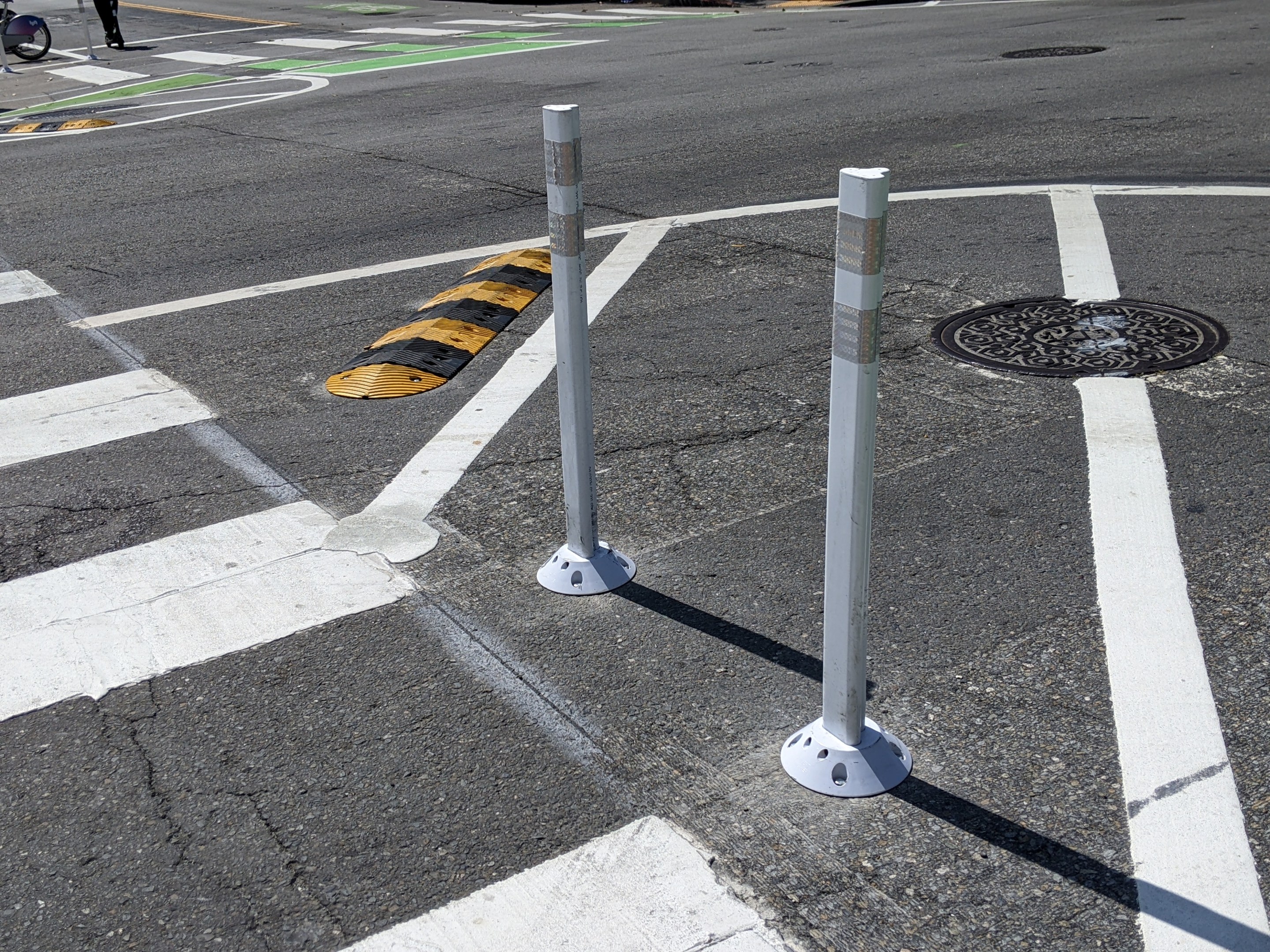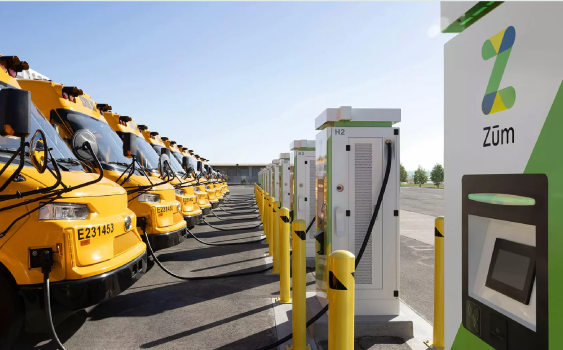It's hard to imagine a bike lane project that's had more plans and public outreach than Valencia Street's curbside-protected bike lanes. That's why it was surprising to see an important discrepancy between the approved plans and what SFMTA actually installed.
"Take a look at the intersections in the approved design and tell me if anything looks off to you?" asked Streets Forward's Luke Bornheimer, in a text to Streetsblog, suggesting a follow-up to "SFMTA Leaves Valencia Bike Lanes Unfinished," a post from last week.
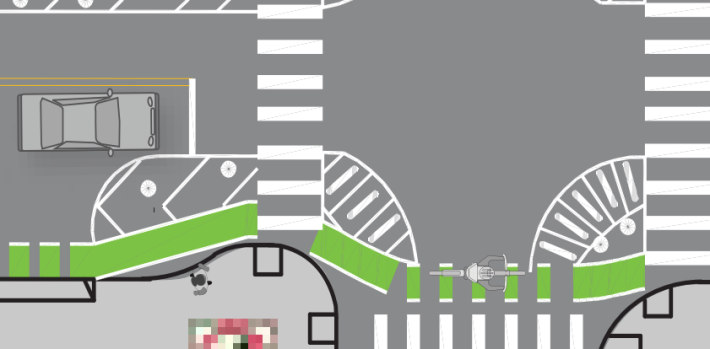
In the earlier post, Streetsblog pointed out that the "protected" corners, as seen in the lead image and the photo below, need concrete to keep drivers from cutting across the white lines and potentially causing a right-hook crash with a cyclist. Indeed, forcing drivers to go around that corner island space is absolutely key to how protected intersections work.
But as seen in the diagram above and the images of the installation, on many of the corners on Valencia, SFMTA didn't follow their own plans, and reduced the number of posts and speed bumps.
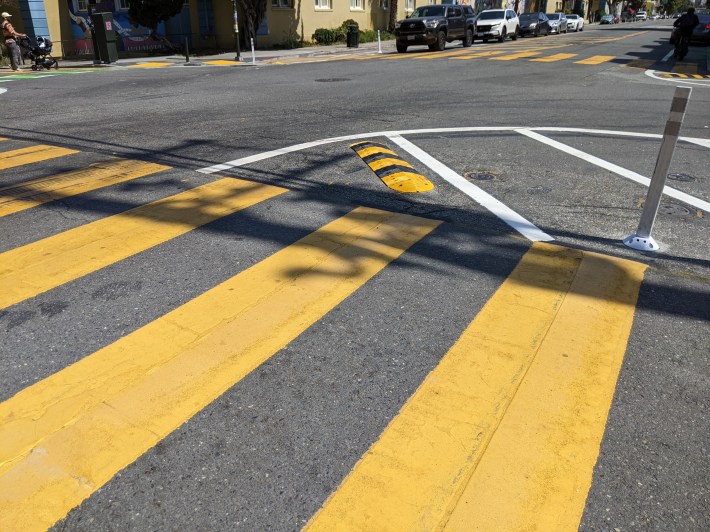
"This is an example of conceptual designs being refined over time. We share these concepts with the public and elements can change based on the feedback we receive and what we determine to be feasible within a given amount of space," wrote SFMTA's Michael Roccaforte. He added that eliminating the extra speed bumps provides more space for cyclists.
Maybe so, but Bornheimer wasn't the only cyclist to take issue. "Nolan" left a comment on the previous story, writing that "I've seen or been involved in several near-misses already, where a car turning right, on green, waits for pedestrians to cross and then immediately guns it without looking to see if bikes are coming. The lack of concrete protection hurts here, as it means there's little visibility into the bike lanes; any place there is room for a car to squeeze in, they do, regardless of the striping on the road."
"I've had several near misses with drivers turning right who don't even look for bicyclists. I've only avoided getting hit because I saw it coming," wrote another cyclist in the comments.
That's consistent with Streetsblog's own observations. And it's exactly why wide corner islands are necessary—they force drivers to slow and reposition the angle of the car so an oncoming cyclist isn't lost in the driver's blind spot. See the embedded video above which shows how Dutch-style protected intersections work and why those islands are essential for safety.
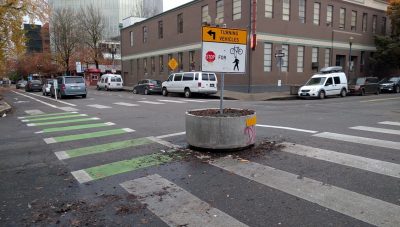
Magnus Barber, an advocate who regularly commutes on both Valencia and on the protected infrastructure getting installed on 14th in Oakland, reached out via email to express his own observations. "Makes me curious why/how Oakland is able to do it properly, and SF just can't get it right?" he wrote. "Oakland is such a contrast—proper concrete! And it's not just 14th St, all recent protected infrastructure in Oakland appears to be real, concrete, properly protected."
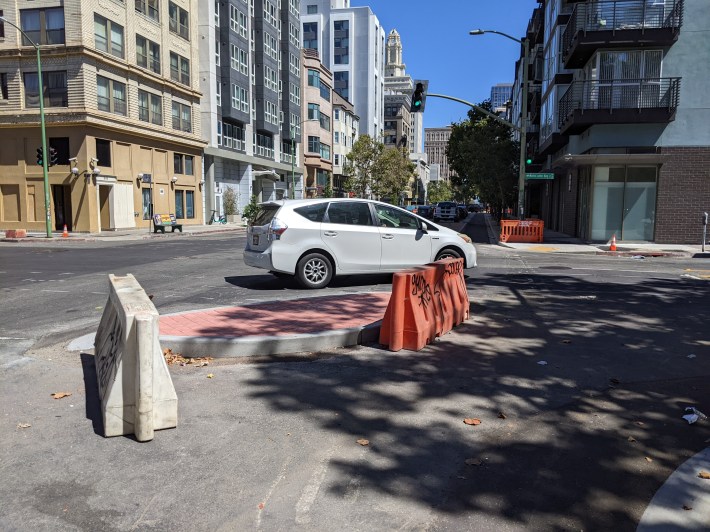
"Oakland has done a great job of creating protected intersections with concrete that work really well, and I hope that San Francisco can catch up soon," observed Bryan Culbertson, advocate with Traffic Violence Rapid Response.
Some of that, most likely, comes down to the timing of implementation. And Oakland, in places, has also fouled up protected intersections and corners, notably around Lake Merritt BART.
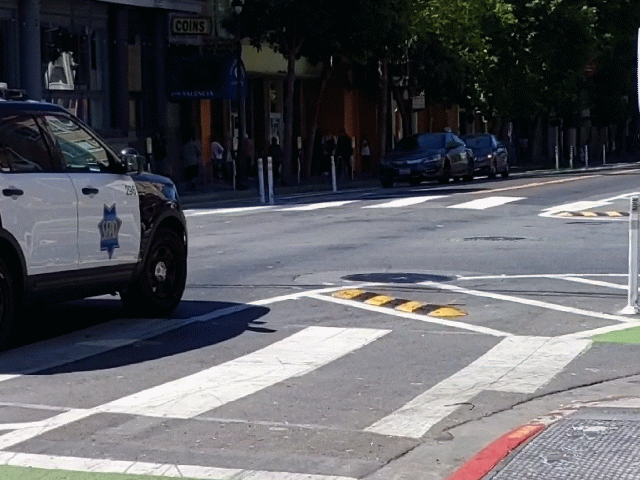
SFMTA's new protected intersections on Valencia certainly seem to work better than what was there before. Still, Roccaforte's explanation notwithstanding, it seems odd that the city removed these extra deterrents to drivers entering the space. Streetsblog hopes a fix is coming from SFMTA.
